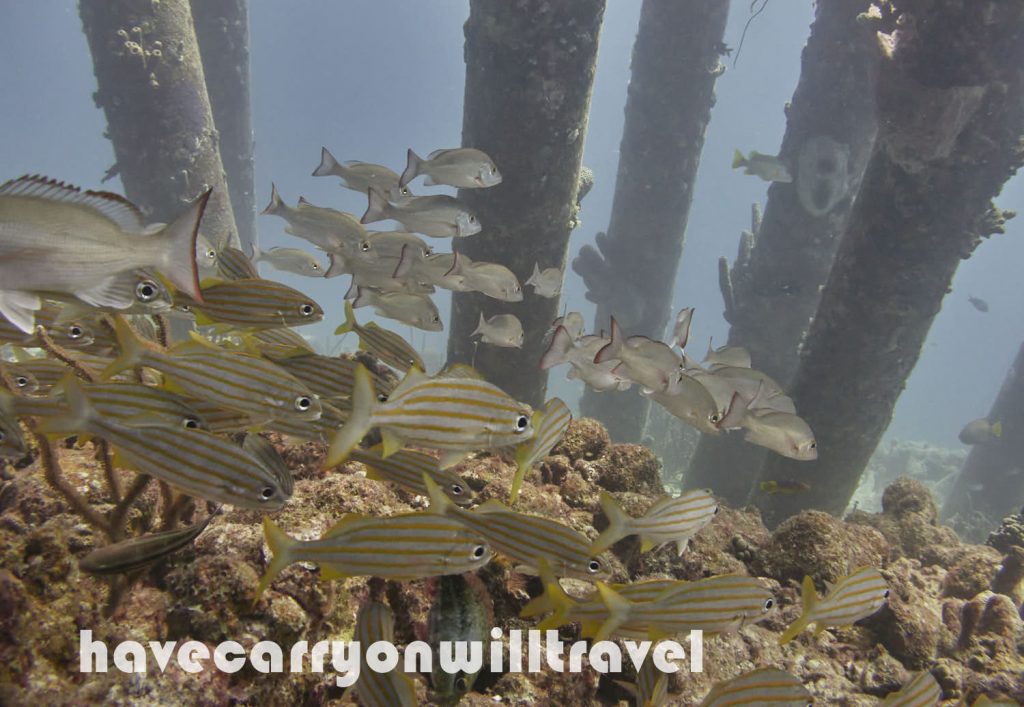We have now scuba dived up and down the west coast of Bonaire. The daily routine, from breakfast to packing lunch to loading tanks and gear into the truck, is done efficiently. As we climb into the truck, we ask “Where shall we go today?” More and more we are going south, past the kite surfers, to unmarked dive sites where not many divers go.

Most of the popular dive sites have yellow rocks indicating their location and name and a yellow buoy out in the water to also mark the dive site. Most divers head to these sites. Murray and I are touring the sites with no yellow rocks or buoys. These unmarked dive sites are described in our Bonaire Shore Diving book. The trick to these sites is that there is no buoy, so divers need to know how to work a compass.
As we stand on shore, all geared up and ready to enter the water, Murray takes a compass reading straight out from shore. Once in the water and masked and finned, we flip on our backs and kick out on the surface to the drop off, with Murray keeping an eye on the compass direction, or just staying in line with a point on the shore.
We then descend, and swim down the drop off, on the compass direction to about 30 feet. We look for two or three markers to pin point where we need to come up to the shallows. Choosing markers is a tricky business. The prime marker HAS to be distinctive. Tall, weirdly shaped, leaning, anything that makes it stand out. A bland marker looks just like all the other coral heads and sea fans. Once a prime marker is chosen, then one or two secondary markers are picked to correlate with the prime marker. This way if we think we have come back to our prime marker, we can double check by seeing the secondary markers. Trust me, this is needed and does work. A couple of dives early on, we missed our markers because they didn’t stand out enough.

Once we choose markers, we descend to 60 feet and swim into the current along the reef. At about 1,600 psi of pressure, we turn around and swim back, slowly working our way to 50 feet depth, then 40 feet then 30 feet. Once at 30 feet we start keeping an eye out for our markers. Almost every dive, I have to tell myself “Just a bit further” as I think we should come to the markers earlier than we do. And just a bit further along we do find them.
Once at the marker, Murray takes out the compass and we follow the reverse compass direction into shore. We usually are within spitting distance of where we should be. It’s a pretty good system and works well for us and allows us to dive where most people won’t.
The hardest part of the dive for me is getting out of the water. We have been horizontal for just over an hour so standing on wobbly legs is okay but now we are getting battered by waves and walking on uneven rocks and sand with 30 lbs on our backs. We both have had spills in the surf but have managed to right ourselves and get onto land. One of our first dives I ended up turtling myself, laying in the surf on my back on my tank with my arms and legs helplessly up in the air. Needless to say, Murray had to come rescue me.
Once back at the truck, we take our dive gear apart and take off our wetsuits, stow everything, grab a snack and a drink and head to the next dive site. Such is life on Bonaire.
